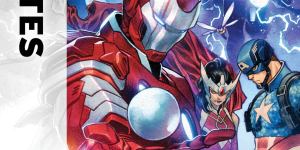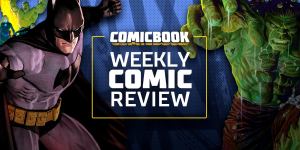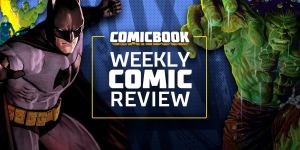
There’s a special echelon of creator that I often consider when things appear grim. They’re the elder statesmen of media, the folks who have both produced game-changing work throughout their life and lived a life worth admiring. These are the individuals who both continue to inspire through a literal lifetime of creativity, and remind us that there doesn’t have to be any ugly truths behind that achievement. Country music has Willie Nelson; history has Robert A. Caro; comics has Walt Simonson. Ragnarok: The Breaking of Helheim #1 delivers another reminder that Simonson is still one of the best living artists in the medium, even 35 years after he took over Thor and ensured his place in comics’ Valhalla.
Videos by ComicBook.com
While this new #1 issue does continue the story of the previous Ragnarok miniseries, it also does a fine job of introducing potential new readers to the world and conflicts. There are some references to past events, but nothing that slows the story or sews confusion. Anyone vaguely familiar with Norse mythology, whether it’s via Marvel Comics or storybooks, is bound to recognize the enormous toll of Ragnarok and how that would leave a world gripped by despair. Things still appear grim in The Breaking of Helheim, but Thor has a clear purpose and his mission (along with one very potent vision) drives this story forward with no need for additional context.

It’s worth highlighting the extended vision of Ragnarok as it becomes the centerpiece for this re-introduction. The sequence is formed entirely from splash panels and spreads, creating a mural-like effect; this is the sort of artwork that could be draped as a tapestry. Size and shape are more important to reading this sequence than panels as it constructs a largely symbolic reimagining of the world’s end. Single moments capture the before and after, paired beautifully with the narration in the style of an epic poem. It allows readers to linger long enough to forget how much time they’ve spent, wondering whether it has been far too long or just a few moments as with a real vision. This is Simonson at his most expressive and powerful, bringing all of his skill with design, structure, and style to bear, and reminding readers why he’s still one of the best in comics.
This moment also provides a stark relief to the rest of the tale, as Thor trudges through a down-trodden world drinking mead and planning next steps with his squirrel friend Ratatosk. Small touches in their relationship and with the antagonists observing them display a clear love for the series’ source material. This is an original work contemplating apocalyptic myths, rebuilding the vibrant stories of old for a new age where humanity is still grappling with its own impending doom (one that seems closer than ever). While Ragnarok is not an obvious allegory, the tone and approach of the text acknowledges the world in which its created at a primal level.

Whether or not you feel a natural connection to Norse mythology, Ragnarok offers a world worth exploring simply for the sake of exploring. Both its heroes and villains deliver the complexity one expects from ancient lore, and they become even more fascinating when set in a fallen world gripped by despair. That setting could become drudgery, but it’s constantly enthralling under Simonson’s hand. He displays both the grandeur of past great battles and the new status quo with awe-inducing skill. Ragnarok: The Breaking of Helheim delivers a welcome return to a tumultuous take on the myths of Asgard and one of modern comics’ greatest cartoonists.
Published by IDW Publishing
On July 17, 2019
Written by Walt Simonson
Art by Walt Simonson
Colors by Laura Martin
Letter by John Workman
Cover by Walt Simonson





